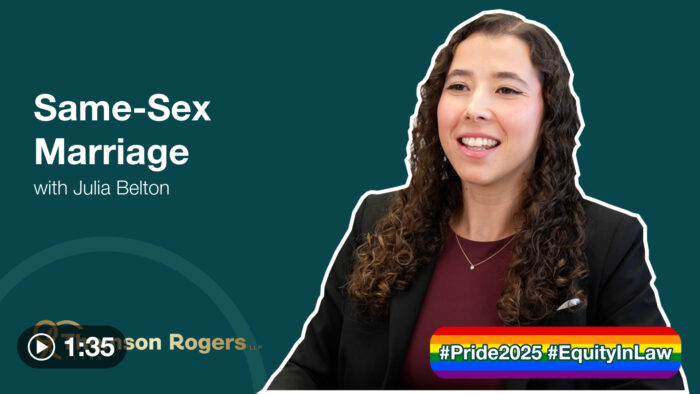One-on-One with Darcy Merkur
Author(s): Darcy R. Merkur
June 1, 2015
Darcy Merkur has combined his passion for business and the law to build a reputation as one of the most innovative personal injury lawyers in the country.
Numerous lawyers already rely on his Ontario Personal Injury Damages Calculator software to ballpark the value of client claims, and many more will soon reap the benefits of Merkur’s legal wisdom as he joins the advisory board of Practical Law Canada’s new personal injury litigation offering.
Merkur has spent his entire 15-year legal career at the Toronto firm Thomson Rogers, where he is now a partner, spanning a turbulent period in the personal injury field. He was recently honoured by his colleagues in the Ontario Trial Lawyers Association with the Dean Edgell Award for legal writing and leadership activities, and with more upheaval on the horizon, personal injury lawyers will continue to look to this inventive thinker for guidance. Here, Merkur tells us his story, and shares some of the secrets to a successful personal injury practice.
How has your career evolved to this point?
I always sort of expected to be a businessman of some sort, and I was initially registered to do a joint MBA-law degree, but I eventually elected to stay in law only. I was attracted to litigation for the same reason many people are: I like to be on my feet, I like arguing, I like debating, I like trying to see both sides of an argument, and I like strategizing.
When I was in law school, I was in a program working for a criminal lawyer, and sat in on a murder trial, but in the course of that, I realized it was not the kind of lifestyle that I had envisioned. I ended up going into the personal injury world on the plaintiff side because it felt more like the good side of the equation, where I could help people in need.
How is your practice divided now?
I work almost exclusively for accident victims, but I’ve also had a lot of experience dealing with mass wrongs. I have dealt with class actions involving historic sexual and physical abuse, and lawsuits where there has been a harm done on a community of people. Where you have a lot of people who are victims of the same alleged perpetrator, there are lot of benefits to proceeding as a group
What element of your work do you find most challenging?
Dealing with client needs: our clients have suffered life changing injuries that have a profound impact on every aspect of their life. They have hour-to-hour, minute-to-minute needs that are pressing and require your attention at all hours of the day and night. It’s hard to be everywhere at once and manage your own personal life as well. Their problems seem more serious than your day-to-day problems too, so it’s hard to say, “well, I’m playing soccer with my kid, I can’t talk to you right now,“ when this person can’t get out of their apartment because the elevator broke, and they’re wheelchair bound. You need to have a team of people you can rely on, so that you can still manage your personal life, while at the same time being on call.
How has the personal injury sector changed since your started out working in it?
Advertising has changed the way in which a personal injury lawyer can become heard of, and that’s had a major impact on the way the firms market, and the way we get files. There have been a number of insurance changes along the way too, but those have not had the profound impacts on the industry that one might have expected. There is still a lot of need for lawyers, despite cuts in insurance benefits and policy limits and all the rest of it. But the marketing aspect has really been an industry changer.
Are there any changes on the horizon that you think will significantly affect personal injury practice?
The one issue that looms right now is whether or not law societies are going to let law firms go public. That’s been developing across the world, in Australia and England, and in the event that does come to Canada, it could have a major impact on the magnitude of personal injury firms. I would expect a consolidation of the industry to some extent, with someone taking a clear market lead using capital behind them to overrun the industry.
What do you think is currently the biggest challenge facing personal injury lawyers?
There’s increased competition, but not a lot of objective criteria out there to distinguish one lawyer from the next. Many lawyers are promoting themselves as industry leaders without necessarily having those credentials, so it’s a big challenge to persuade the public at large about your own credentials in the face of mass advertising.
What matters stand out to you as the most significant during your career?
Last year I was retained by a catastrophically injured 40-year-old man who I could relate to very strongly. He had a good job, he was a family man, and he was innocently driving home to pick up his children after work one day when another driver, completely at fault, went into him. Thankfully there was no significant brain injury, so he still had all his faculties, and could express his love and affection for his children, but at the same time, he won’t be able to walk again. It really resonated with me, so I took it upon myself to move heaven and earth to achieve a settlement for the full amount of the policy as soon as humanly possible so that my quadriplegic client could purchase a new house for his family, and live with the high quality of life that he was used to, without having to move into some temporary or unsuitable home. I spent countless hours on the phone getting the file to the attention of the right supervisors at the insurance company, so that they were in a position to recognize the gravity of the situation, and this nice family could get on with their life as best they could under the circumstances.
What is your greatest accomplishment?
I was involved in the residential school class action for many years, which will always have a special place in my heart. We helped thousands of survivors who suffered physical and sexual abuse access compensation from the Government of Canada. Since then, my career has changed to primarily individual personal injury cases, and the ones that are the most meaningful to me are where the funds were really well used to make the person and their family have a better life.
View full extract from Practical Law Canada The Magazine (Personal Injury), Spring 2015 issue: One-on-One with Darcy Merkur
Share this






